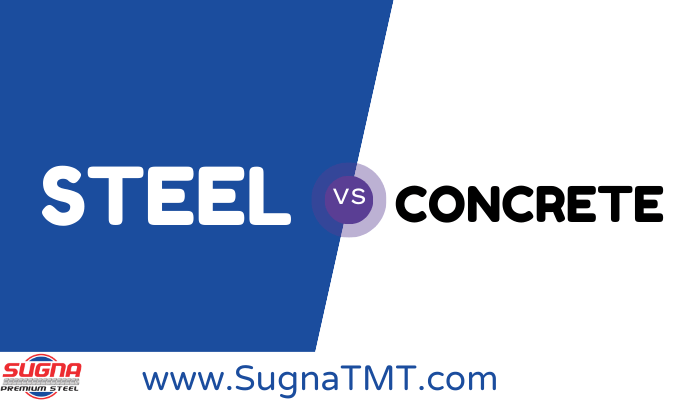When embarking on a construction project, one of the most critical decisions you’ll face is selecting the material for your structure. Both steel and concrete offer unique advantages and drawbacks, making the choice between them a pivotal one. In this comprehensive guide, we’ll delve deep into the characteristics, benefits, and applications of each material to help you make an informed decision for your project.
Steel vs. Concrete

Strength and Durability
Steel
Steel is renowned for its exceptional strength-to-weight ratio, making it an ideal choice for structures requiring long spans and high load-bearing capacity. Steel structures offer remarkable durability and can withstand harsh environmental conditions, including earthquakes and hurricanes. Additionally, steel’s resistance to corrosion ensures longevity, reducing maintenance costs over the lifespan of the building.
Concrete
Concrete, on the other hand, is prized for its compressive strength and ability to bear heavy loads. Concrete structures exhibit excellent durability and can withstand fire, moisture, and pests, making them suitable for various applications, from residential buildings to bridges and dams. While concrete may require periodic maintenance to address cracking and spalling, proper design and construction techniques can mitigate these issues.
Cost Considerations
Steel
The cost of steel construction can vary depending on factors such as the type of steel used, project complexity, and labor expenses. While steel’s initial material cost may be higher than concrete, its shorter construction time and ease of assembly can result in overall cost savings. Additionally, steel’s recyclability makes it an environmentally friendly option, aligning with sustainable building practices.
Concrete
Concrete construction often offers competitive upfront costs compared to steel, particularly for projects with simple designs and local availability of materials. However, factors such as formwork, curing time, and site logistics can impact the overall cost of a concrete structure. Despite this, concrete’s longevity and low maintenance requirements can provide significant cost savings over the life of the building.
Design Flexibility
Steel
Steel’s inherent strength and ductility afford architects and engineers greater design flexibility, allowing for innovative and visually striking structures. Whether it’s soaring skyscrapers, expansive stadiums, or intricate bridges, steel offers endless possibilities for creative expression. Additionally, steel’s uniformity and consistency make it easier to prefabricate components off-site, streamlining the construction process and reducing on-site labor costs.
Concrete
While concrete may have traditionally been associated with utilitarian structures, advancements in technology and construction techniques have expanded its design versatility. Architectural concrete allows for the creation of sculptural forms, textured surfaces, and intricate detailing, enabling architects to push the boundaries of creativity. Additionally, concrete’s ability to be molded into virtually any shape makes it an ideal choice for projects requiring bespoke elements and complex geometries.
Environmental Impact
Steel
Steel production is energy-intensive and can generate significant carbon emissions, particularly if produced using traditional methods. However, the industry has made strides in reducing its environmental footprint through innovations such as recycled steel and energy-efficient manufacturing processes. Additionally, steel’s recyclability ensures that end-of-life materials can be repurposed, contributing to a circular economy and minimizing waste.
Concrete
Concrete production also carries environmental implications, primarily due to the extraction and processing of raw materials such as limestone and sand. However, advancements in concrete technology, such as supplementary cementitious materials and carbon capture technologies, are reducing the industry’s carbon footprint. Moreover, concrete’s durability and thermal mass properties can enhance energy efficiency and contribute to sustainable building practices.
Conclusion
In the debate between steel vs. concrete for construction projects, there is no one-size-fits-all answer. Each material offers unique benefits and considerations, requiring careful evaluation based on project requirements, budget constraints, and sustainability goals. Whether you prioritize strength, cost-effectiveness, design flexibility, or environmental impact, understanding the characteristics of steel and concrete is crucial in making an informed decision for your next construction endeavor.

